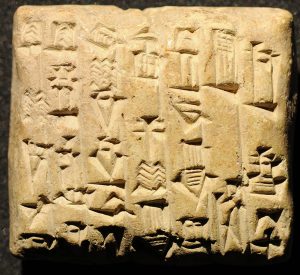Reflectance Transformation Imaging is a way to photograph fine texture details on objects that are very difficult to capture with one or to photographs. For example fine scratches in multiple directions could require many raking-light images to be taken normally. RTI captures the object’s surface details in one go. It is best understood by looking at an example (as you can’t just look at the result like any normal image)

Polynomial Texture Maps (PTMs) were invented at HP Labs in California by Tom Malzbender (see Wikipedia). Since then various improvements, hardware and software have been developed to use it as a specialist imaging tool. The advantage over a 3D capture is it is capable of high levels of image detail as it is not capturing a point-cloud but actual images. It can also be viewed without the need for 3D hardware (although this is very common in computers/tablets now).
See the CHI page for a fuller description and try our online demo to see what it looks like (select Lightbulb to change light direction). You can download a sample PTM here and use the RTIViewer to see the full effect.
User stories
Carl heron – The British Museum
“Since its installation in 2014, the reflected transformation imaging (RTI) dome at the British Museum’s department of Scientific Research has been used to investigate objects of diverse nature, ranging in size and material from stone, to wood, to works on paper and panel, as well as carved jade objects, metal objects and coins” see more
Jacob Dahl – faculty of Oriental Studies – Oxford University
“The camera-domes you developed and built for my projects massively facilitated my own research, speeding up the publication of my two recent monographs and reducing the number of visits to the collections I needed to do. The camera domes also became part of a work flow for imaging tablets, that was endorsed by both the Mellon Foundation and the Louvre Museum through their support for our work — we proposed to image everything using flatbed scanners and subsequently those objects that needed special treatment or attention we would image with the camera dome. I should mention that the objects I work on, cuneiform tablets, are very abundant, with almost 20,000 in the Louvre in Paris and 5-6000 in the Ashmolean Museum in Oxford, for example. We have also been able to post large numbers of RTI images to our web-based project (https://cdli.ucla.edu). This site, which is universally acknowledged as the leading project in cuneiform studies, is not only a research project but also a service to other researchers, and a repository for cultural heritage data, and the RTI images obtained with the camera domes that you and your team designed and build massively improved our web-offering.”